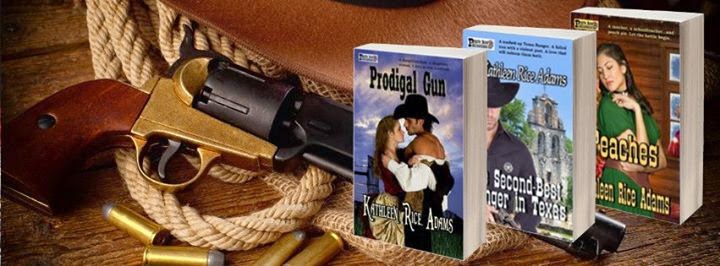 |
| Serial published in 1865 |
South Texas has its own gruesome headless horseman legend. Unlike Irving’s unforgettable spook, however, Texas’s decapitated caballero rode among the living once upon a time.
Some say he still does.
In the summer of 1850, a Mexican bandito by the name of Vidal made an egregious error: He and several compadres rustled a sizable herd of horses from several ranches south of San Antonio. One of the ranches belonged to Texas Ranger Creed Taylor, a veteran of the Texas War for Independence and a man not inclined to forgive his enemies. (Taylor later would be one of the participants in the Sutton-Taylor Feud, a bloody, years-long running gun battle that rivaled the better-known fracas between the Hatfields and McCoys.)
Rustling cattle already had earned Vidal’s head a dead-or-alive bounty. Stealing a Texas Ranger’s horses proved the proverbial last straw. Together with fellow Ranger William A.A. “Big Foot” Wallace and another local rancher, Taylor set out to put a stop to Vidal’s unbearable insolence.
 |
| Creed Taylor, c. 1872 |
After tracking the banditos to their camp, Taylor, Wallace, and the third man mounted a surprise attack while the outlaws were asleep. Killing the desperados was not enough for the vigilantes, though. The entire Ranger force was fed up with the rash of rustling plaguing Texas at the time. Not even leaving bodies hanging from trees or hacking them to pieces and using the bits for predator bait had made a strong enough statement.
So Wallace got creative. After beheading Vidal, he secured the corpse upright on the back of the wildest of the rustled horses, lashed the bandito’s hands to the saddle horn and his feet to the stirrups, and tied the stirrups beneath the animal’s belly. Just to make sure anyone who saw the ghoulish specter got the message, he looped a rawhide thong through the head’s jaws and around Vidal’s sombrero, and slung the bloody bundle from the saddle’s pommel. Then Wallace and his friends sent the terrified mustang galloping off into the night.
Not long thereafter, vaqueros began to report seeing a headless horseman rampaging through the scrub on a dark, wild horse. As sightings spread, some claimed flames shot from the animal’s nostrils and lightning bolts from its hooves. Bullets seemed to have no effect on the grisly marauder. They dubbed the apparition el Muerto — the dead man — and attributed all sorts of evil and misfortune to the mysterious rider.
 |
| William A.A. "Big Foot" Wallace, c. 1872 |
Even the revelation of the truth behind the legend did not end el Muerto’s reign of terror. Until nearby Fort Inge was decommissioned in 1869, soldiers reported seeing a headless rider roaming the countryside around Uvalde, near Taylor’s ranch. Thirty years later, a rise in the ground 250 miles to the southeast, near San Patricio, Texas, was christened Headless Horseman Hill after a wagon train reported an encounter with el Muerto. A sighting occurred in 1917 outside San Diego, Texas, and another near Freer in 1969.
El Muerto reportedly still roams the mesquite-covered range in Duval, Jim Wells, and Live Oak counties — still fearsome, still headless, and still reminding those who see him that Texas Rangers didn’t come by their tough-hombre reputation by accident.
This post originally appeared on Sweethearts of the West, a blog maintained by a group of western historical romance authors and devoted to the history and lore of the American West. I post a new entry on the 12th of each month, and I'd be delighted to see you there. —Kathleen
